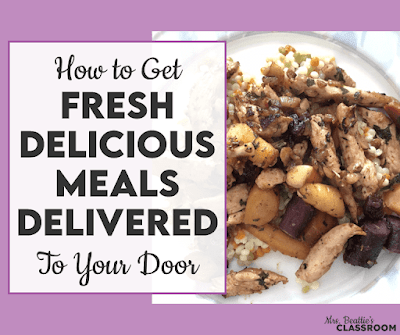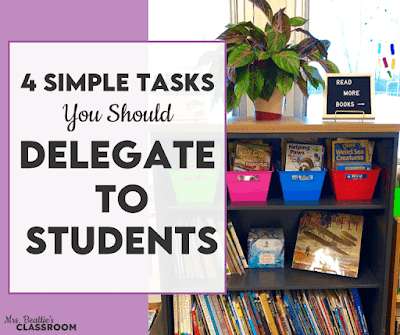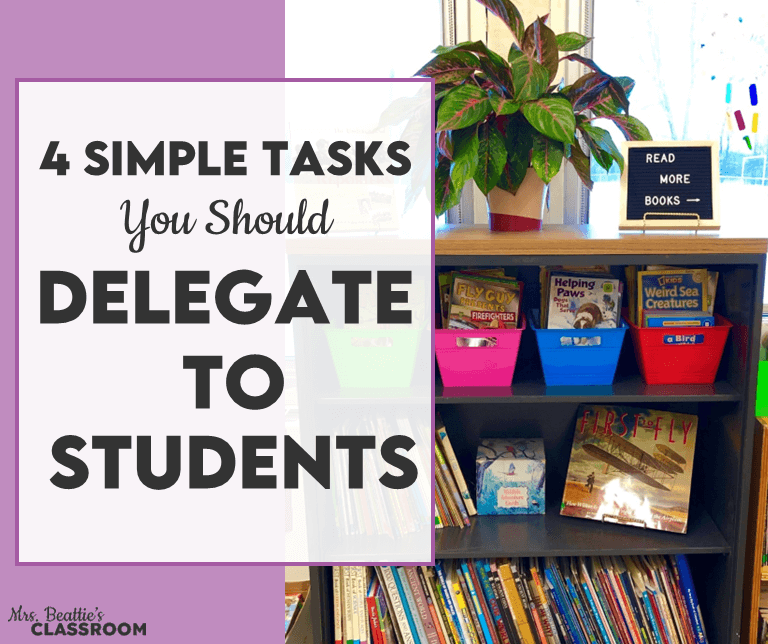Everyone goes through tight spots now and then. Unexpected illnesses, loss of income in a two-income family, or job action and uncertainty like we’re experiencing right now in Ontario put an enormous added strain on the wallet. But not to fear—you can still have a good life until things return to normal and you feel comfortable again. Here are 16 simple ways to save when money is tight.

Caffeinate At Home
If you make one switch to your regular routine while money is in short supply, let it be this one.

If you’re a teacher like me, there are approximately 194 teaching days a year. The average person not working on a contract like ours will work as many as 250 or so, not counting weekends and holidays.
🤔 So, let’s do a quick bit of math…
If you purchase one medium coffee each working day for a year, you’ll probably spend about $1.85. Multiply that by 194 teaching days, and you spend over $350 a year. It’s probably closer to $460 if you’re not a teacher.
Put that cash back in your pocket by making your coffee or hot beverage of choice at home and bringing it with you or taking the time to indulge before you leave home.
You can even purchase some of those top cafe brands in home-use packages!
Pack a Lunch
Eating out at a restaurant or even picking up some lunch goodies at the nearest market is fun. I’m the first to admit that I despise organizing lunches and would rather grab something fresh and ready to go than make a sandwich or salad myself.
While I do treat myself from time to time, I know just how expensive this can get.
When I pop into the store across from my school, I can easily spend $8-$10 on a couple of things for lunch. Multiplied by my teaching days, I’d spend over $1900 on lunch food alone!
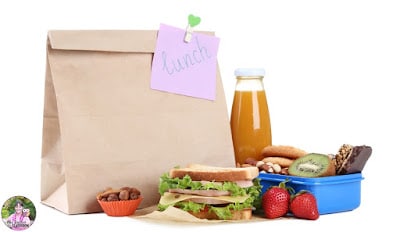
Now, if I figure out the cost for bread and lunch meat, or the ingredients for salads or snack foods I might bring, the total cost is MUCH LESS than this.
Go Day Old
Now, related to lunches is another fantastic money-saving tip.
Before you head to the shelf and grab the first package you see, check out the discounted day-olds tucked away in the corner of your grocery store or local bakery.

Some colleagues tease me for it, but I have no problem eating foods past their “best before” date. I think they’re a farce to get people to spend more if I’m honest! 😂
You can often save as much as 50% or more off of the regular prices, and you’ll find that the quality is pretty darn close to the fresh options.
Don’t knock it till you try it!
Buy Store Brands
If you’re unwilling to push the fresh dates on the foods you eat, why not purchase store brands instead of brand-name items?
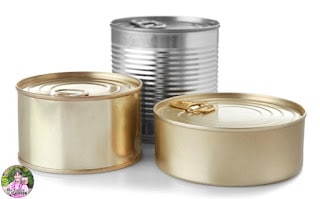
You’ll find that the quality is usually just as high and sometimes even better than the brand-name choices!
If you don’t love one, try another, and you’ll find a brand you love.
Watch For Sales
You might be loyal to your favorite brands, but you can still save a good chunk of cash if you watch for sales on the items you purchase often.

Peruse the weekly flyers or use an app like Flipp to check for great discounts before leaving the house.
Make a List
Another great way to avoid overspending is to make a list of the things you need and commit to ONLY buying what is on it.
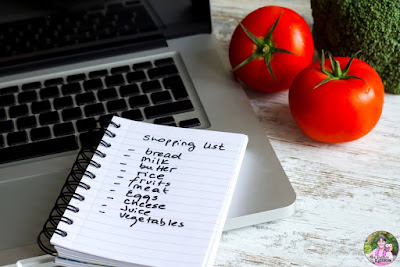
This strategy works well when hunting for sale prices.
If you live in an urban area with many shopping locations nearby, you’ll want to stick to your list but purchase the items on it at the lowest possible prices.
Uh, oh! Major Temptation Ahead!
Inevitably, you’ll find something in the store that you have to buy think you need, or you’ll add something to your list that makes you take a second thought.
Before spending money on something, ask yourself, “Do I need that?” If not, don’t buy it.

Use Coupons
Some people are embarrassed to use coupons, and I can’t understand why.
If you could purchase the same item as the person ahead of you in line and pay less to get it, why wouldn’t you?!
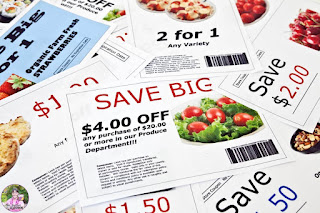
Make collecting coupons part of your regular shopping routine. Look for the items in the flyers and ensure the things you have coupons for are on your list!
Limit Restaurant Visits
Many families make restaurant nights out part of their regular “family time” and have difficulty giving that up when times are tight.

I can’t stress enough how cutting out restaurant meals can reduce your monthly spending and put money back in your pocket.
If you can’t give up the spoiled feeling of not having to prepare a meal, why not consider takeout instead?
You can avoid the need to leave a hefty tip for your server, consume your own beverages, and even eliminate a delivery fee by picking the food up yourself!
Avoid Alcohol
No, not entirely. Wine is one of my guilty pleasures, and I’m not prepared to give it up completely to save money, but I rarely order alcohol when eating out.

If you can’t resist the joy of eating out when money is tight, order water (with lemon is my favorite!) or a soft drink instead. You often get free refills of these beverages; they cost a fraction of the price of alcoholic options, and the taxes are much lower as well.
Carpool
Gas. Is. Expensive.
It’s been years since it dropped below $1 per litre here in my part of Ontario, and lately, we’ve rarely been below $1.50 per litre! (For my friends in the US, that’s over $4 per gallon.)
If you have a friend at work who lives nearby, why not make a plan to carpool and take turns covering that cost?

Gas Up Mindfully
If you don’t have anyone to carpool with, you can still save…
Watch gas trends using an app like Gas Buddy and make a plan to fill up on the lowest days. In my area, that is usually Monday. Almost without fail, the prices go up significantly on Tuesdays here.

Sign up for your favorite station’s reward program (they’re free!) and cash in on the perks they’re giving away. Sometimes, discounts on gas or sometimes deals on items in their convenience store. Whatever it is, get more for your dollar!
Movie Nights In
While a night out at the movies is alluring, you can have a fun movie night at home for a fraction of the cost.
Rent a movie online or find one on Netflix since you’re probably already paying for that.
Make your own popcorn. I actually far prefer the taste of Costco’s Kirkland popcorn over the stuff at the movie theatre anyway, and the cost is about 20x less!

Stop Funding Your Classroom!!!
I can’t stress this one enough.
I know that putting money out for the things you need in your classroom makes your life easier than not having them. Not only does it strain your personal finances, but you’re also sending a message to your government and the public that it is okay that classrooms aren’t adequately funded.

It is not okay!!
If there are things you absolutely need for your classroom, try:
- Checking with colleagues who may already have the resources.
- Borrowing from a resource library or public library. (Until recently, our local teacher’s college had a vast resource library from which all teachers in the area could borrow.)
- Asking your administration to cover the cost.
- Asking your parent council to support the purchase of the resource.
- Using a crowd-funding site such as TPT Class Fund or GoFundMe, if these are allowed in your area.
Buy In Larger Quantities
Avoid grabbing small packages at ridiculous prices for the things you often purchase.
Don’t buy a four-pack of toilet tissue at the corner store, where you’ll spend a buck a roll. Instead, grab a big bulk package and pay pennies per roll.
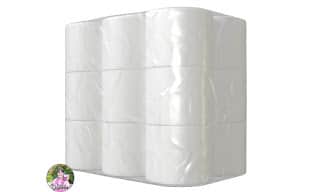
You’ll have to put out more money upfront, but buy these items far less often.
This is an excellent strategy for things like toiletries, over-the-counter medications or pain relievers that you often purchase, snack foods, or meal items that you regularly consume. Even wine is cheaper when purchased in a magnum instead of small bottles!
Upsize these items and upsize the cash in your wallet at the same time!
Borrow Instead of Buying
Books can become a significant expense if you’re an avid reader like me. I LOVE to read and do it daily, but I would easily spend $60 or more monthly on my habit at regular prices.

One of the best things I’ve ever done is get set up on my local library’s Overdrive account using the Libby app and my Kobo e-reader.
I’m actually reading more than ever by borrowing books for free from the library!
One Bonus Tip!
Spend some time getting to know your benefits package. There are often excellent wellness services there that are covered for you.
Massage therapy is a great one to take advantage of and use. You are entitled to it, and it is excellent for both the body and mind.

I hope you’ve found these money-saving tips helpful!
You might also be interested in the tips I’m sharing in these posts:
If you have enjoyed this post, please share it with friends and colleagues on Facebook or pin it on Pinterest:


